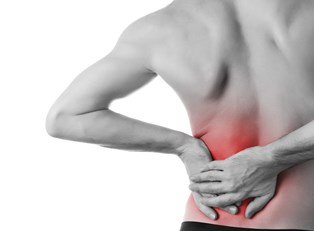Myofascial pain syndrome is a chronic disorder characterized by pain in specific locations of the body. Commonly associated with repetitive activities, myofascial pain syndrome particularly affects the fascia, a muscle-covering soft tissue. In many cases, the point the pain is derived from is not where the pain is actually felt. Here’s a look at the causes, symptoms, treatment, and of myofascial pain syndrome.
Causes of Myofascial Pain Syndrome
Myofascial pain syndrome develops from injuring, overworking, or straining a muscle or muscle group. Particular bunches of muscle fibers become extremely sensitive, creating a “trigger point.” The trigger point can extend the discomfort all over the affected muscle (or muscle group), which is called “referred pain.” While muscle pain itself isn’t so unusual and often crops up in response to extreme exercise or other exertion, it usually goes away after a few days. Myofascial pain syndrome, however, does not go away and instead gets worse and worse as time goes on.
Some experts contend that the cause of myofascial pain syndrome is still unknown. There are, however, a variety of issues that may instigate its development or decline. Underlying medical conditions may have something to do with the development of myofascial pain syndrome; the Cleveland Clinic sites heart attacks and disorders that cause irritated stomach lining. Other sources include anemia, hypothyroidism, radiculopathy, hypoglycemia, certain infections, and depression as all seeming to play a role. Previous injuries (particularly to the intervertebral disks), excessive fatigue or sleep loss, and repetitive actions are all implicated as well.
Symptoms of Myofascial Pain Syndrome
Myofascial pain syndrome may appear as chronic or acute. Acute myofascial pain usually presents as a result of trauma, while chronic myofascial pain more often follows patterns of strain. In both cases, you may experience aching pain, often deep in the muscle, that continuously gets worse. Patients often report the sensation of a “knot” in the muscle. The discomfort may be severe enough to inhibit sleep. Some patients have reported tingling or numbness in the affected area and muscle weakness.
Although myofascial pain syndrome is quite different from fibromyalgia, the two diseases tend to share certain aspects: a comorbid presentation of psychological disorders (such as depression), fatigue, and an increase of symptoms with physical or mental stressors, among other things. The characteristic difference could be considered the ability to distinguish an inciting event.
Treatments for Myofascial Pain Syndrome
Most experts suggest physical therapy as the most successful recourse for myofascial pain syndrome. Physical therapy can decrease muscle pain, as well as any associated pain, through a series of activities designed to help strengthen the affected muscles, increase flexibility, and improve overall posture and muscle use -- as well as teach you ways to help prevent such severe future occurrences. This often allows patients to take further preventative steps such as regular exercise, improving sleep, and even enhancing mental outlook. The exact plan designed by your physical therapist will depend on which muscle group is affected and where your trigger points are located. Ultrasound therapy, heat applied through a heating pad or hot shower, and even massage techniques may be utilized. Occupational therapy can be a good option for myofascial pain syndrome brought on by necessary but potentially hazardous repetitious activities in the workplace.
Myofascial pain syndrome may also require medication for improvement, particularly in the beginning when any movement is difficult and before the effects of physical therapy begin to kick in. Over the counter nonsteroidal anti-inflammatories (such as ibuprofen or naproxen sodium) may be effective for some people, although long-term use may result in potentially serious side effects. Certain antidepressants may also be useful, not only to help treat any depression that may be present but also to relieve pain. In some instances, sedatives, such as benzodiazepines, may be utilized to help relax the muscles and make sleep easier, although many of these medications can be habit forming. Injections of numbing agents or corticosteroids into the affected area can be helpful. Talk to your doctor about what treatment options might work best for you.




